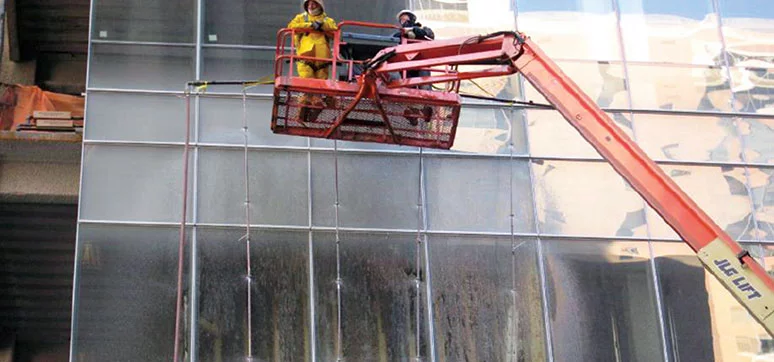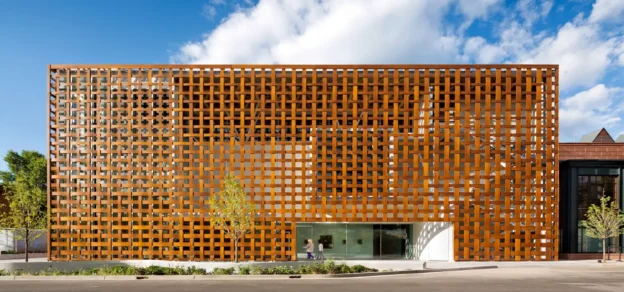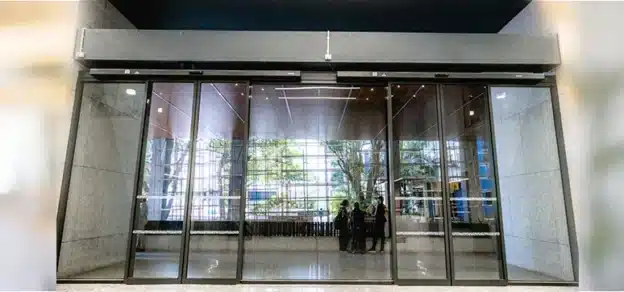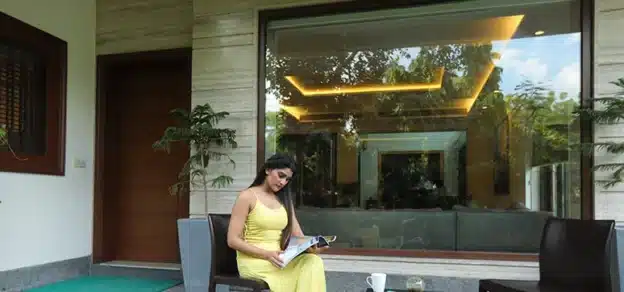The most common and costly problems associated with the in-service performance of vertical building envelopes of large buildings can be attributed to excessive air leakage and water intrusion. Windows and curtain walls in particular — as well as their interfaces with adjacent wall constructions — are critical elements in the performance of the vertical building envelope. Improved standards and design principles have contributed to significant overall improvements in the performance of window and curtain wall systems, including resistance to water penetration, air leakage, wind load, or condensation. However, the reality is that many recently constructed buildings still experience problems with the service performance of installed windows and curtain walls. Typically, these problems result from poor fabrication or installation or a lack of adequate quality control.
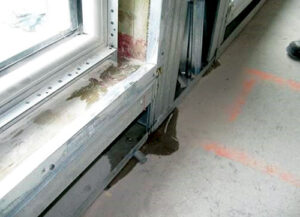
This article discusses evaluating the field performance of windows and curtain walls for large buildings during the early stages of construction to validate as-built designs and during later construction stages as a quality control measure. Through several practical examples, we’ll illustrate how large-scale field testing can be used to assess building envelope performance in large buildings. Our objective is to help increase awareness among members of the building community regarding the benefits and limitations of field testing when evaluating the performance of the large vertical building envelope.
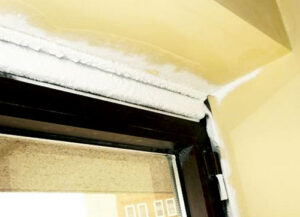
PERFORMANCE REQUIREMENTS
Windows and metal and glass curtain walls can constitute from 50% to 100% of the exterior cladding of large buildings in modern construction projects. An important architectural feature, these building elements represent a significant portion of the overall cost of a construction or renovation project and play an essential role in the vertical building envelope’s performance. Windows and curtain walls must be airtight and watertight, prevent condensation from occurring on interior surfaces and resist wind load and other exterior forces acting on the building envelope. Therefore, an evaluation is an essential part of minimizing the risk of undesirable and costly problems during a building’s expected service life.
Any form of water infiltration or excessive air leakage to the interior of a building would be considered unacceptable to any building owner or occupant. Accordingly, having an appropriate level of resistance to water penetration and air leakage are two of the primary performance criteria for any window and curtain wall system. However, these are not the only performance criteria that must be considered. Other factors include thermal performance, condensation resistance, and wind load resistance.
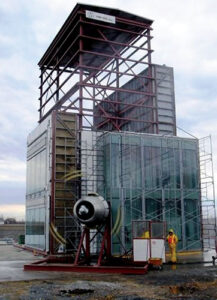
The primary performance requirements that must be considered during the design phase of each project include the following critical factors:
Wind load resistance:
Specified design pressures, typically established by the project structural engineer, are based on the building’s exposure classification, height, type, and configuration. Window and curtain wall components must be designed to resist deflection and failure at the design pressure.
Resistance to water penetration:
Performance requirements for resistance to water penetration vary depending on the building’s height, geographic location, and exposure classification. In the U.S., ratings for resistance to water penetration are typically established as a function of the design wind pressure. In Canada, requirements for resistance to water penetration are determined by the driven rain wind pressure metric, a unique measure of the climatic condition that has been established in more than 640 cities across Canada, based on their geographic location and the building’s installation height.
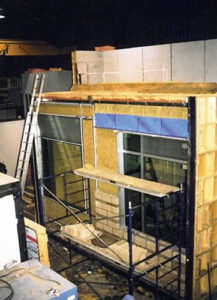
Air leakage resistance:
Air leakage resistance performance requirements are often established by the National Building Code (NBC) applicable in India or any other local building and energy codes and will vary from fixed and operable sections.
Condensation resistance:
Condensation resistance performance requirements depend on the building’s geographic location and anticipated climate conditions as well as the interior hygrothermal design conditions and type of building occupancy.
Ultimately, performance requirements will be established for each project on a case-by-case basis, depending on building height and geographic location, exterior, and interior design parameters, and the type of building occupancy.
INDUSTRY STANDARDS
The following is a list of the principal industry standards commonly used to establish the laboratory performance criteria for windows and curtain walls.
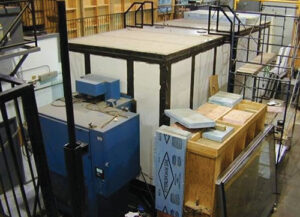
• AAMA/WDMA/CSA 101/I.S.2/ A440: NAFS – North American fenestration standard/ specification for windows, doors, and skylights
• CSA A440S1: Canadian supplement to AAMA/WDMA/ CSA 101/I.S.2/A440, NAFS – North American fenestration standard/specification for windows, doors, and skylights
• AAMA 501-05: Methods of tests for exterior walls
• NFRC 102: Procedure for measuring the steady-state thermal transmittance of fenestration systems
• AAMA 1503: Voluntary test method for thermal transmittance and condensation resistance of windows, doors, and glazed wall sections
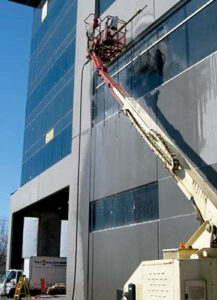
• CAN/CSA A440.2: Energy performance of windows and other fenestration products The following is a list of the principal industry standards commonly used to establish the field performance criteria for installed windows and curtain walls in North America:
• AAMA 502-12: Voluntary specification for field testing of newly installed fenestration products
• AAMA 503-14: Voluntary specification for field testing of newly installed storefronts, curtain walls, and sloped glazing systems
• C A N / C S A – A 4 4 0 . 4 – 0 7 (Appendix E): Field testing of window and door installations
FIELD PERFORMANCE EVALUATION:
Field Performance Evaluation
Given the ever-growing complexity and variety of modern building envelopes, evaluating the performance of installed windows and curtain walls in the preconstruction and construction phases is essential to avoid undesirable and costly problems during the building’s service life.
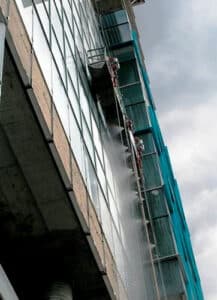
In most projects of any significance, the performance of the window and curtain wall systems intended to form part of the building envelope are evaluated in an accredited testing laboratory prior to construction. However, it is equally important that the installed products’ field performance is evaluated during different phases of construction as a quality control measure. Site conditions, variations in the manufacturing process, or the quality and experience of the field installation team are all factors that can impact the performance of the installed products or systems.
When considering field testing, identify test areas that represent the most common elements of the building envelope. Due to budgetary and scheduling constraints, field testing is typically limited to three to six test areas. Therefore, obtaining the most representative sampling depends on the careful selection of the areas to be tested.
Test areas should be selected based on the complexity of any given detail or condition as well as the frequency at which a given detail or condition is repeated throughout the project. Further, in order for field testing to provide results that are representative of the entire installation, it must always include the interface between the window and/or curtain wall and the adjacent wall assembly. This interface is often the most critical element of any installation and may not have been validated by any form of laboratory testing conducted before construction has begun.

The specified test area for metal and glass curtain walls must incorporate all essential components to thoroughly represent anticipated conditions. This means that a given test area should include at least three glass bays in width to incorporate a central bay as well as all of the junction details. In the case of a unitized curtain wall system, a vertical module joint should also be included in the test area.
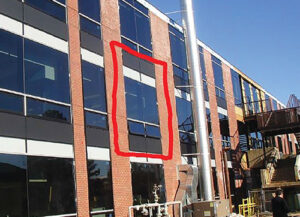
The test area height should include at least one expansion or stack joint, at least one spandrel section, and one vision section. Typically, the height of the area should be at least one full floor-story high. Finally, if the curtain wall is installed adjacent to another type of assembly, the interface detail between the two types of assemblies should also be included in the test area.
CONCLUSION
Today, major building projects require specialized attention to the quality and integrity of windows and curtain wall structures and components at all stages of construction. The testing of these critical building elements to evaluate their performance under a range of anticipated exposure scenarios is essential. Such testing will help ensure the safety and comfort of building occupants and reduce the potential for premature repairs and renovations that can adversely impact a building’s return to investors and shareholders.
“This article is a reproduction of a white paper published by UL, based on an article originally authored by Mario Gonçalves and Robert Jutras”
